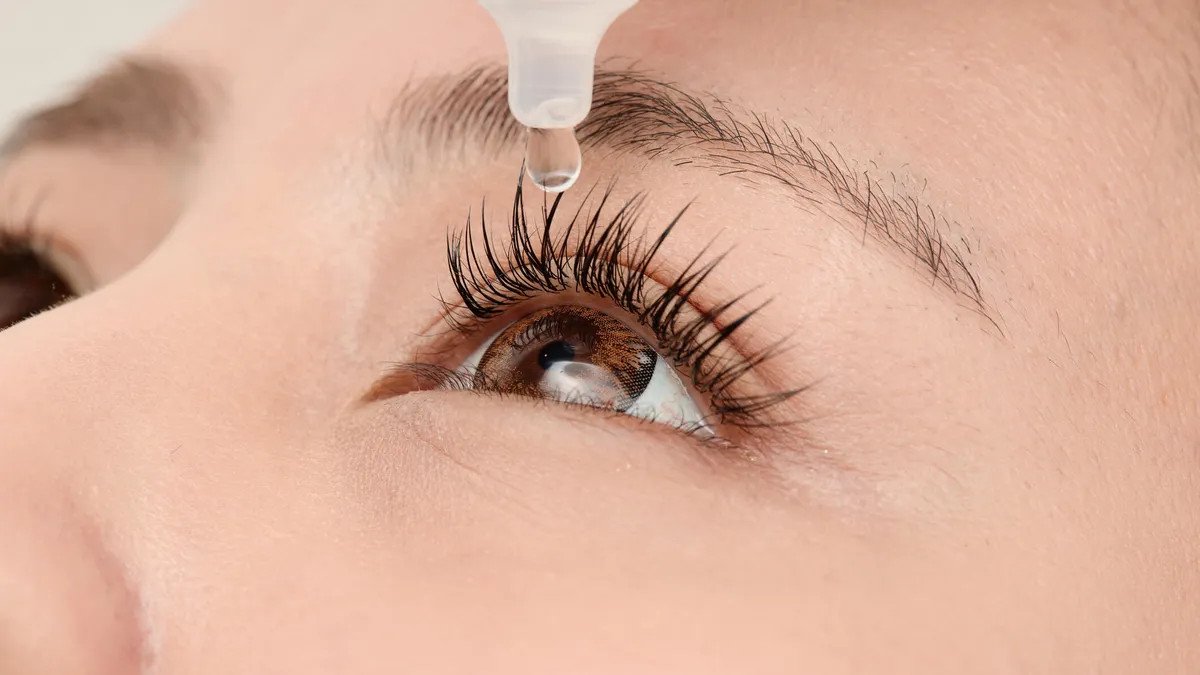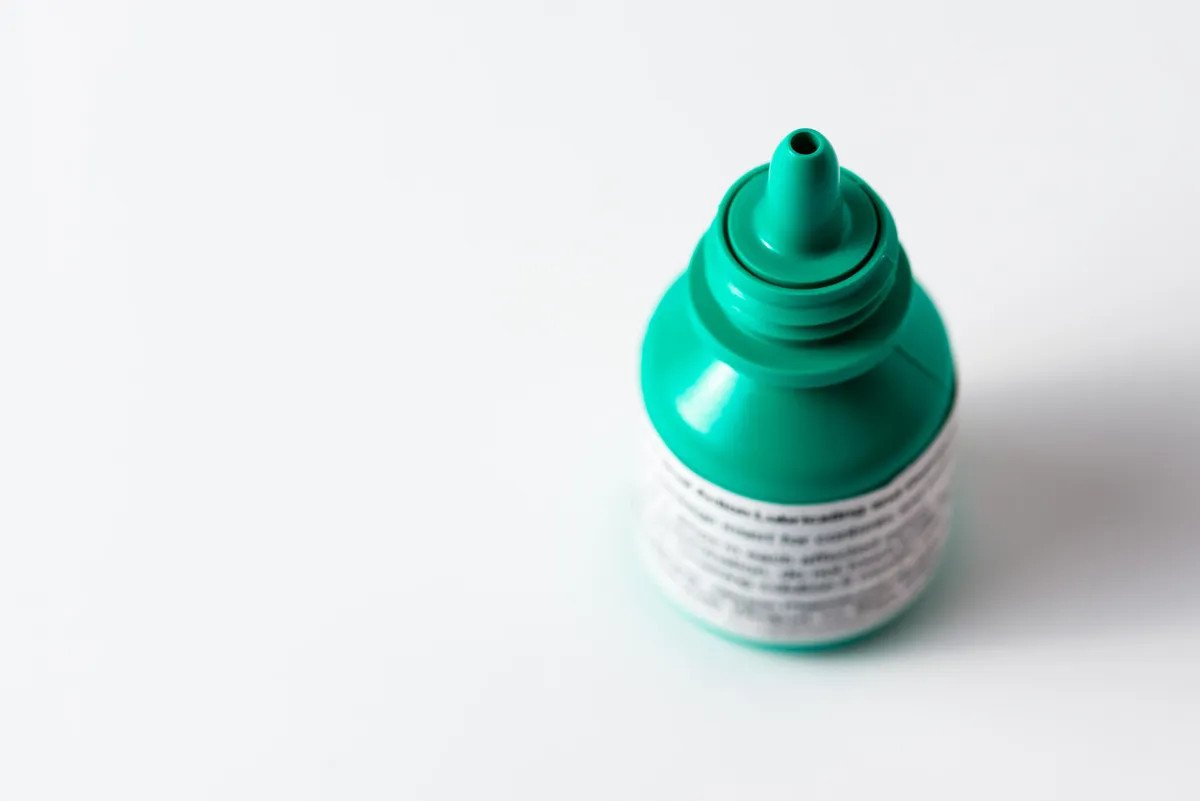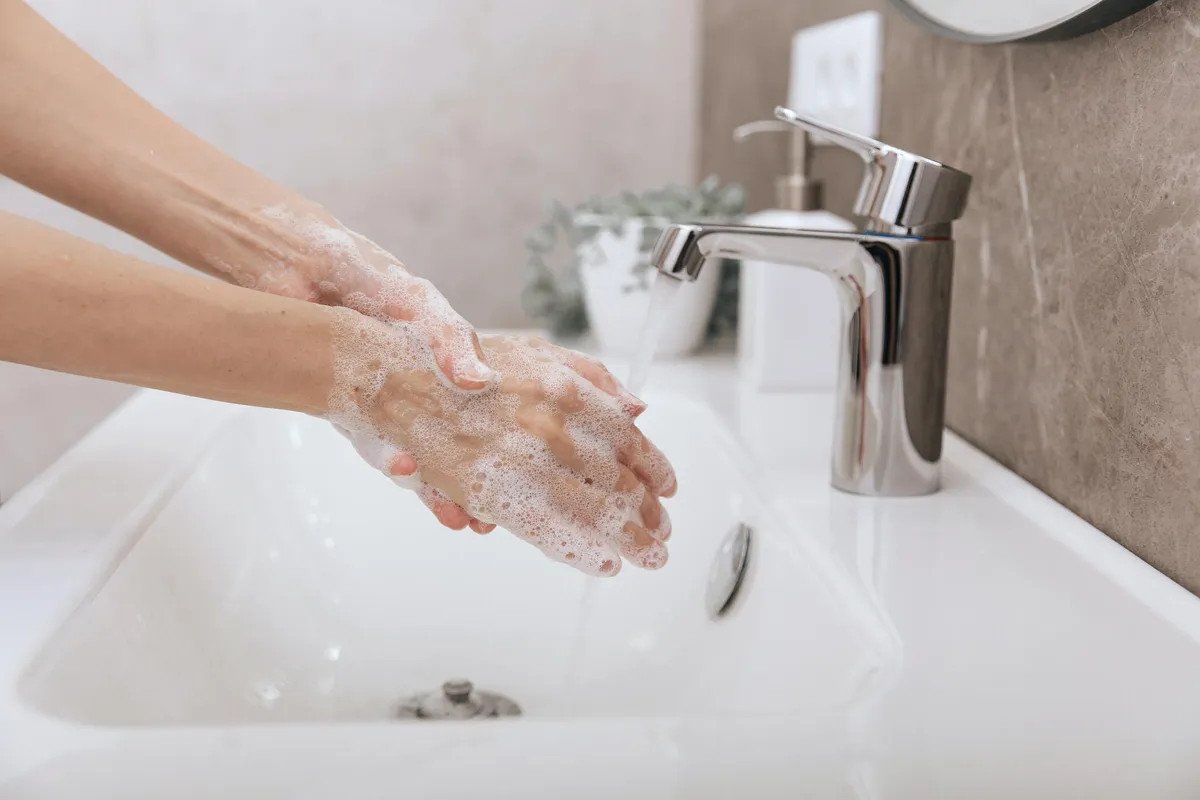Here's What to Look for in Eye Drops and How to Use Them Safely
Some eye drops have been recalled this year, creating questions about their use. Here's how to choose the best eye drops for you.

For many Americans, eye drops are a fact of life. According to market research firm Statista, more than 122 million people in the US will use them this year. They are a fundamental -- often essential -- component of eye health care. However, health scares involving a few eye drop brands in early 2023 have given many patients cause to wonder if their eye drops are safe.
These scares involved a few well-known brands associated with an antibiotic-resistant strain of Pseudomonas aeruginosa, a bacterium that can cause eye infections. Although the bacteria is relatively common and not usually threatening, its resistance to treatment made it particularly dangerous. In a few cases, it caused blindness and even death.
The Centers for Disease Control and Prevention recommended all doctors and patients stop using the associated eye drops -- EzriCare Artificial Tears, Delsam Pharma's Artificial Tears, and Delsam Pharma's Artificial Ointment -- until further notice. The products have since been recalled, but the anxiety around eye drops lingers for many people. Can you use eye drops safely? How do you choose the right kind of drops and apply them correctly? We'll address these questions below.
Understanding eye drops
Eye drops are an important eye care tool for many people. Not everyone needs them, and they're typically a short-term solution, but they're used to treat everything from simple irritation to more serious eye and vision issues.
Types of eye drops
Many different types of eye drops are available, and they're designed to treat a range of conditions. Some can be purchased over the counter, while others require a prescription. The most common eye drops include:
- • Dilating drops: These drops, typically known as hydroxyamphetamine and tropicamide, are only available by prescription, and your eye doctor usually applies them when they need to examine the inside of your eye.
- • Drops for relieving redness or dry eyes: Lubricating drops, or artificial tears, are designed to relieve dryness and any associated redness or irritation. Common active ingredients include polyethylene glycol and propylene glycol.
- • Anti-allergy drops: Antihistamine drops relieve itchiness, redness, and other irritation resulting from reactions to allergens like pollen or pet dander. There are several options on the market, and active ingredients vary by brand. Common ingredients include ketotifen, olopatadine, carboxymethylcellulose and glycerin.
- • Numbing drops: Doctors may use eye drops to numb your eyes before surgery. Tetracaine and proparacaine are the most common options, and both temporarily block the nerves in your eye from registering pain.
- • Antibiotic drops: These prescription eye drops treat infections such as pink eye or corneal ulcers caused by Pseudomonas aeruginosa. Common drugs include gentamicin sulfate and ciprofloxacin.
- • Drops for treating certain health conditions: Eye doctors may prescribe various other types of eye drops to treat a range of conditions, from myopia and glaucoma to chronic inflammation.
Common eye conditions you can treat with eye drops
As you can see, eye drops are used to treat a host of conditions, from minor irritants to chronic vision problems. Optometrists and ophthalmologists prescribe them to help patients heal after surgeries and to prevent infections. You can buy many of them over the counter to deal with dry eyes or an allergy flare-up.
It's important to understand that ingredients vary widely by the type of eye drop, and using the wrong type of drop can cause more problems than it solves.
How to shop for the best eye drops
With so many options available, careful research is critical to ensure you choose the right eye drops to treat your particular eye issues. There are a few steps you can take to make the right selection.

Consult with your doctor
The most important thing to realize is that you shouldn't treat eye drops as a DIY product. While you can learn how to put eye drops safely on your own, you should always consult your eye doctor about the right type to buy and how to use them safely.
"People don't always pay attention to what they're buying or why they're buying it," said Dr. Ronald Benner, an optometrist at Southern Montana Optometric Center who has been practicing for more than 30 years. "And, while there were some serious consequences to those drops [involved in the recent scare], they really weren't getting good, quality vision care -- they were just buying over-the-counter drops. We strongly recommend that all patients consult with their local optometrist to make sure that they're using the right drop for the right reasons."
Identify the cause of the eye concerns
Because there are so many different eye issues, finding the underlying problem is essential for choosing the right treatment. Benner notes that many patients choose drops that only provide temporary relief without addressing the underlying cause. This can lead to endless reliance on drops or even make problems worse.
Dry eyes, for instance, have many potential causes. They may be a result of allergies, or your time in front of a computer might be a factor. Or you might not naturally produce enough tears. Treatment for each of these causes would be quite different.
"Get the actual help to solve the problem and don't just treat a symptom," said Benner.
Consider preservative vs. preservative-free options
Most medications, including eye drops, include preservatives to help keep bugs and bacteria out. As Benner notes, they're meant to protect consumers, but they may not always be the best choice. In some cases, preservatives can irritate the tissues of the eyes.
"The preservative can cause the problems that the drop is supposed to help alleviate," he said. "For many people, using a preservative-free version is much healthier and much more comfortable for the eye."
In his practice, Benner always guides patients who are complaining of sensitivity or had recent surgeries to use eye drops that don't contain preservatives. Often, people who use eye drops regularly will benefit from avoiding preservatives. Again, Benner stresses that your eye doctor can steer you in the right direction based on your situation.
Consider allergen-free eye drops for sensitive eyes
Preservatives aren't the only potential irritant in eye drops. Antibiotics, beta-blocking agents, corticosteroids, antioxidants and other ingredients have all been associated with eye irritation in some patients. Before you use any eye drops, it's a good idea to consult your eye doctor and read ingredient labels to note any potential allergens.
Safety precautions for using eye drops
Choosing the right eye drops is only the first step in the process. Once you have the correct product in hand, be sure you know how to put in eye drops so you don't cause any harm to your eyes.
Follow the instruction on the label
Each bottle contains instructions for proper application. These ensure you use the proper dose and that it spreads over the whole surface of your eye. Instructions also include guidance on how often to apply the drops and reactions that indicate you should stop. Never use eye drops without reading these instructions.
Wash your hands properly before each use

Your hands may contain dirt, bacteria or other irritants that could affect your eyes, and there's no way to avoid putting your fingers on your eyelids when applying drops. At best, this might offset the benefits of using eye drops. At worst, it might create new problems. Always wash your hands thoroughly with soap and water before applying eye drops.
Avoid eye drop contamination
It's also important to keep the eye drop bottle itself sterile and free from germs, as this could result in cross-contamination between your eyes or with another user. Aside from washing your hands before you apply the drops, avoid touching the dropper to your eyes or touching the tip with your hands. Always put the cap in immediately after use and store the eye drops in a clean, sterile environment.
Be on the lookout for expiration dates
All eye drops have an expiration date, which is printed on the bottle. They're usually good for one to two years unopened, but this period may be shorter for eye drops that don't have preservatives.
Keep in mind that preservatives and other active ingredients begin to break down once you open the bottle. This makes them less effective and increases your chances of infection. Most manufacturers recommend throwing away eye drops after they've been open for 28 days. Single-application vials should be discarded immediately after use.
Tips for correct eye drop application
Even with the correct, clean drops in hand, it's important to know how to put eye drops in properly to maximize their effectiveness and reduce your chances of having a reaction. Here are a few steps you can take to correctly apply most eye drops:
1. Wash your hands.
2. Remove the cap and place it in a clean, dry location.
3. Tilt your head back while pulling down your lower eyelid.
4. Squeeze the proper amount of drops into the sac created by pulling down your lower lid.
5. Release your eyelid and close your eyes for 30 seconds to allow the solution to spread across your eye.
6. Repeat on your other eye if needed.
When in doubt, be sure to review the instructions on the bottle.
Potential side effects of eye drops
Depending on the type of product and any allergies you may have, eye drops can cause a range of side effects. Some of the most common include redness, swelling, itching or soreness. More serious side effects may include prolonged burning, discharge, or even hives, swelling, wheezing, dizziness or vomiting.
These side effects could be the result of an allergic reaction, or they may be a sign of infection or a foreign body irritating your eye. As Benner notes, the only way to be sure is to contact your eye doctor.
"If the eye stays red or gets redder, those people should be seen ASAP," he said. "If there's mucus, if there's sharp pain in the eye, if there's discharge out of the eye, patients should be seen right away."
Storage, care and travel tips for eye drops
Like any other medication, eye drops must be stored properly to prevent spoilage or the development of bacteria. Be sure to follow the manufacturer's instructions for storage location and temperature to ensure your drops stay effective and safe to use.
This can be especially difficult to do when traveling. If you know your suitcase will sit in a hot car or airplane luggage compartment, for instance, you may want to keep your eye drops with you or run them to your hotel room sooner rather than later. Always check to ensure the lid is secure and free from any risk of contamination.
Too long; didn't read
Like sunglasses and other eye care products, eye drops are an important tool for maintaining eye health. Whether you get them by prescription or over the counter, it's essential to consult with your eye doctor about the correct product and learn how to put eye drops in safely. Eye drops are generally safe to use, but you should always report side effects to your doctor right away -- and avoid using any products that have been recalled.
[Note: The information contained in this article is for educational and informational purposes only and is not intended as health or medical advice. Always consult a physician or other qualified health provider regarding any questions you may have about a medical condition or health objectives.]
(CNET)


Leave Comment